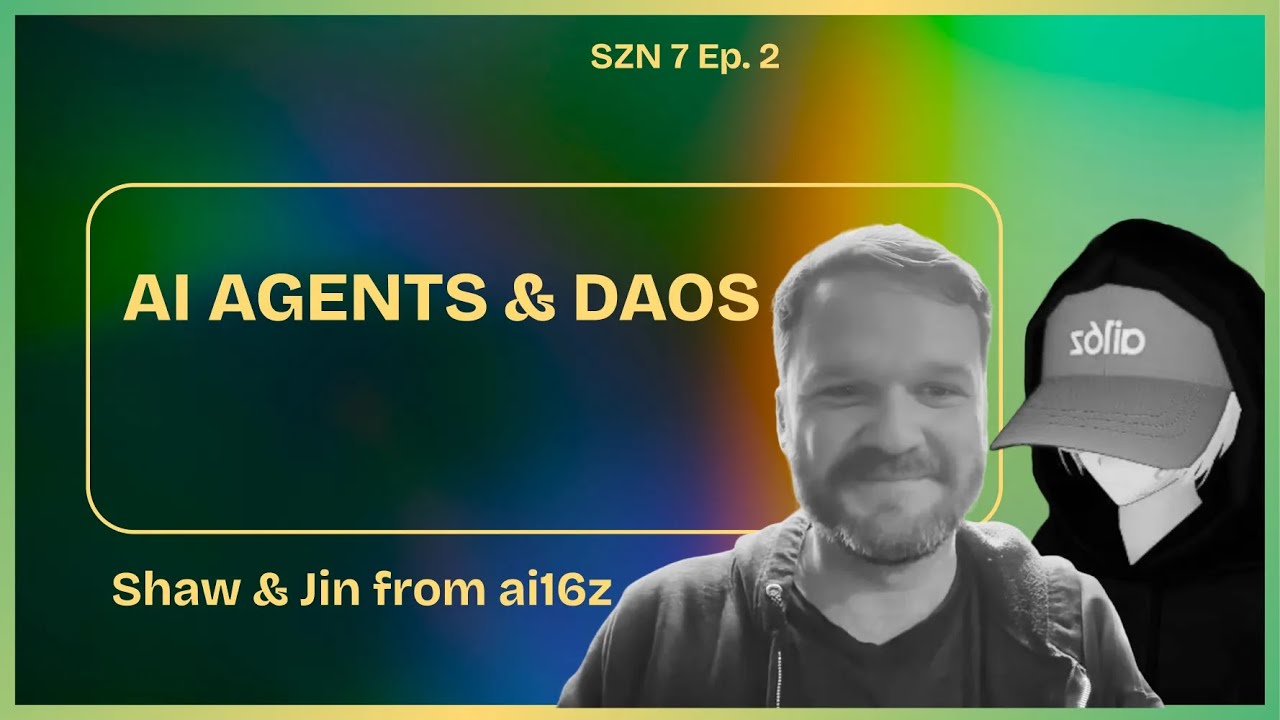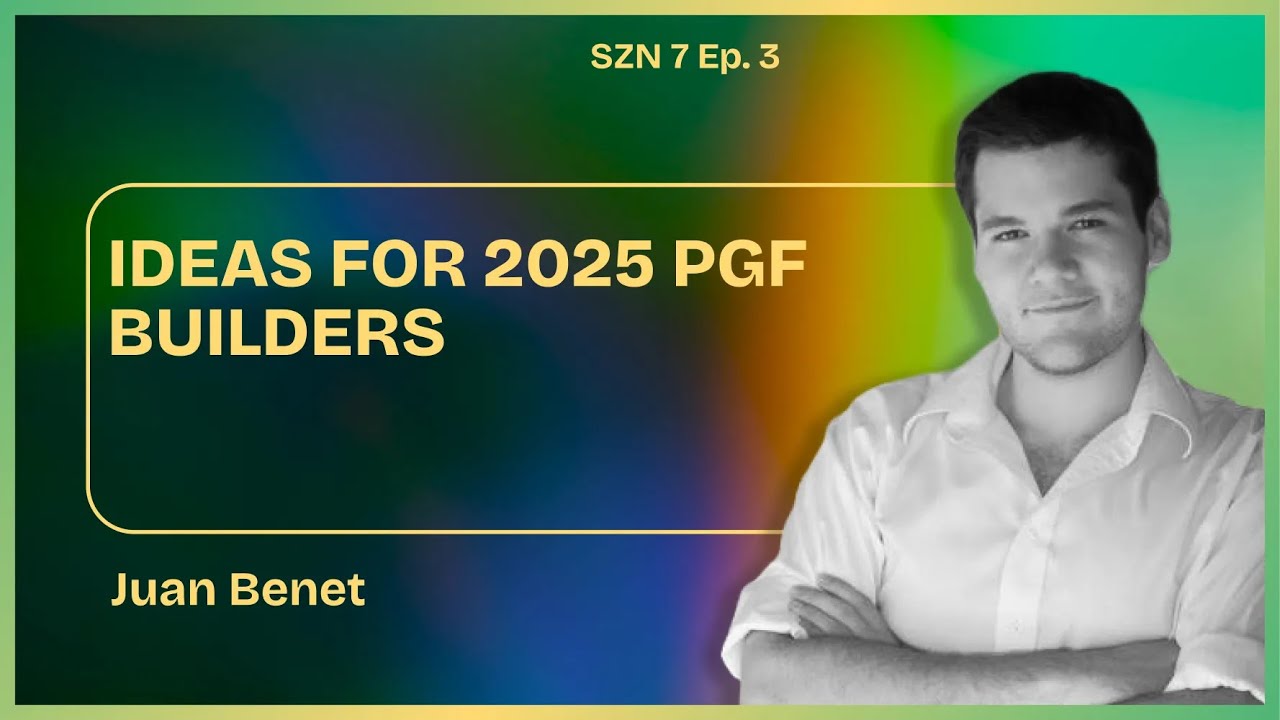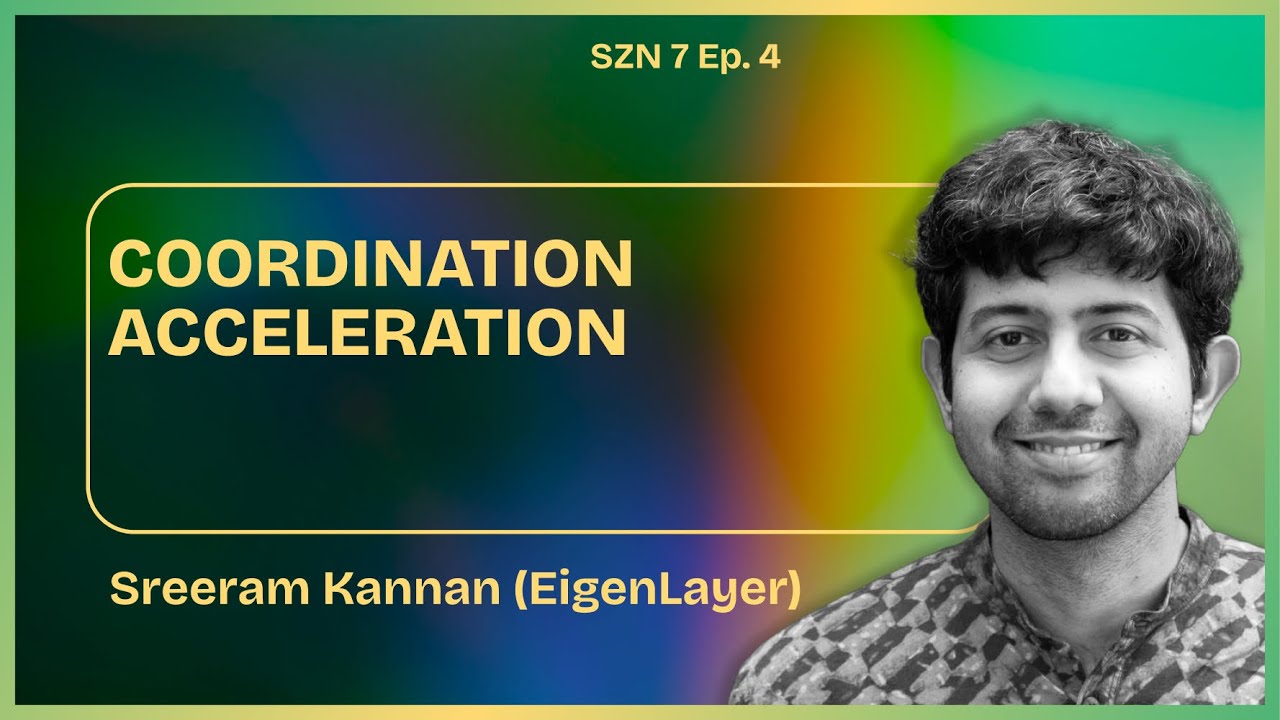Just wanted to share 4 podcast episodes I did with top minds in the ecosystem suggesting different ideas for 2025 regen builders. Hope this is useful to the builders in the Gitcoin ecosystem this year(including Gitcoin itself)!
4 Likes
If you are a bit lazy like me ![]() I got the transcript of these 4 videos and summarized it with chatgpt here:
I got the transcript of these 4 videos and summarized it with chatgpt here:
[2024] Web 3 Public Goods Funding In 2025 W/ Vitalik
1. Hybrid For-Profit/Nonprofit Funding Models
- Concept: Develop investment vehicles that blend profit incentives with public-good incentives. These models attract investors looking to earn returns but who also care about ecosystem and societal health.
- Example: Create structured funding vehicles where investors accept slightly lower returns in exchange for measurable, positive ecosystem impact.
2. Institutionalized Public Goods Funding
- Concept: Implement mechanisms that enshrine funding at the protocol level, such as allocating a portion of transaction fees or block rewards directly to public goods.
- Example: Ethereum rollups or major Layer 2s could have embedded fee mechanisms, where a percentage automatically funds public goods initiatives.
3. Automated Public Goods Funding (AutoPGF)
- Concept: Develop stablecoins or financial products that automatically channel yields or fees into public goods funding.
- Example: Projects similar to Glow Dollar that generate yield from stablecoin deposits and automatically allocate it to ecosystem-supporting initiatives.
4. Protocol Guild Models for Other Domains
- Concept: Expand the Protocol Guild concept to various other technical or social domains beyond Ethereum core development.
- Example: Forming guilds around ZK-tech developers, UX/UI designers, blockchain governance teams, or open-source AI model creators, with rules ensuring ongoing inclusivity.
5. Info Finance and Decision Markets
- Concept: Design markets explicitly to gather information and guide decisions. Utilize Futarchy-style markets to optimize governance and resource allocation.
- Example: Prediction markets for governance decisions that pay contributors based on the accuracy of their predictions on metrics directly related to public good outcomes.
6. AI-Assisted Governance and Judgments
- Concept: Use AI agents combined with human oversight to scale governance tasks, moderation, and decision-making, significantly improving efficiency and consistency.
- Example: Platforms could use AI to predict likely outcomes of public good initiatives and reduce human overhead by focusing human judgment only on ambiguous or high-stakes decisions.
7. Tokenization for Open-Source Funding
- Concept: Leverage tokenization to provide substantial treasuries for open-source projects, ensuring sustainable funding without reliance solely on donations.
- Example: Open-source libraries or tools (like AI agent libraries) issuing governance tokens that capture speculative interest, thus funding continued development and maintenance.
8. Diverse and Robust Public Goods Allocation Mechanisms
- Concept: Invest in and experiment with multiple allocation mechanisms simultaneously to avoid over-reliance on one method (Quadratic Funding, Retroactive Funding, Protocol Guild, etc.).
- Example: Gitcoin-style Quadratic Funding rounds augmented by complementary methods like Retroactive Public Goods Funding and novel decentralized governance mechanisms.
9. High-Quality Mechanism Iteration and Stability
- Concept: Emphasize rigorous testing, empirical analysis, and stable iteration cycles in public goods funding mechanisms to ensure trust and reliability in their outcomes.
- Example: Stable protocol updates with clear, transparent feedback loops, ensuring public goods funding mechanisms evolve predictably and transparently.
10. Demonstration Projects with Global Applicability
- Concept: Develop successful public goods mechanisms within Web3 ecosystems that serve as templates or blueprints for real-world application outside blockchain.
- Example: Digital public goods funding mechanisms proven on Ethereum being replicated by governments, large corporations, or even space exploration governance models.
S7 Ep. 2 - Ai Agents & DAOs
 High-Potential Ideas for 2025
High-Potential Ideas for 2025
1. AI-Powered Continuous Retroactive Funding (Auto-CRF)
- Concept: Automate ongoing retroactive public goods funding using AI agents to track and evaluate contributions in real-time.
- Use Case: Continuous rewards for developers and contributors to open-source projects, automatically allocating tokens based on transparent criteria.
- Why: Significantly reduces overhead, incentivizes continuous contribution, and addresses human bias and fatigue in evaluating contributions.
2. AI-Enhanced DAO Governance
- Concept: Deploy AI agents to manage coordination, summarization, and communication within DAOs.
- Use Case: Agents assist in summarizing discussions, identifying key action points, routing critical information, and automating tedious governance workflows (e.g., proposals, votes).
- Why: Addresses coordination challenges in decentralized organizations, improves decision-making speed, and reduces burnout.
3. Social Media-Native AI Applications (Web4 Apps)
- Concept: Build applications that exist primarily within social media through AI agents, reducing friction and increasing accessibility.
- Use Case: AI agents on platforms like Discord, Twitter, or Telegram handle everything from ordering products, booking travel, managing financial transactions, to personal assistance directly via social interaction.
- Why: Users engage effortlessly in familiar environments, improving user experience and retention dramatically.
4. Agent Marketplaces (Agents Hiring Humans)
- Concept: AI agents autonomously identify their weaknesses, create bounties, and hire humans or other agents to fulfill tasks, creating dynamic marketplaces for talent and ideas.
- Use Case: AI agents post bounties on GitHub or decentralized talent marketplaces, accelerating talent discovery and project execution.
- Why: Streamlines talent acquisition and allocation of work, reduces human cognitive overhead, and promotes organic ecosystem growth.
5. AI-Driven Documentation and Translation
- Concept: Autonomous AI agents continuously document and update software projects, and translate documentation into multiple languages automatically.
- Use Case: Self-documenting codebases, real-time documentation updates, and instant multilingual support.
- Why: Dramatically improves accessibility, reduces onboarding friction, and promotes global collaboration.
6. Infinite Backrooms (AI Council of Experts)
- Concept: AI agents trained on the collective wisdom of experts to explore and analyze complex design spaces continuously, providing novel strategic insights.
- Use Case: Training AI on prominent thought-leaders (e.g., Vitalik Buterin, Glen Weyl, Daniel Schmachtenberger, Elinor Ostrom) to derive new strategic directions and insights for public goods, governance, or other complex fields.
- Why: Allows for continuous strategic ideation and insights beyond human cognitive limits, helping organizations uncover hidden opportunities and anticipate trends.
7. AI-Enabled Swarm Coordination
- Concept: Decentralized swarms of AI agents collaborating to solve complex, large-scale problems, self-organizing and sharing insights rapidly.
- Use Case: Solving large-scale coordination problems like decentralized infrastructure development, environmental data analysis, or collective intelligence tasks.
- Why: Enables scalable and resilient problem-solving, significantly outperforming traditional centralized or manually coordinated systems.
8. AI for Personalized Decentralized Finance (DeFi) Interfaces
- Concept: AI agents simplify user interactions with DeFi protocols, automatically navigating complex financial mechanisms such as staking, liquidity pooling, and yield farming.
- Use Case: Intuitive AI-driven financial advisors integrated directly into wallets or social platforms, making DeFi universally accessible.
- Why: Significantly expands the user base of DeFi by eliminating usability barriers, democratizing access to financial opportunities.
9. Community and Contribution Analytics
- Concept: Deploy AI agents to analyze contributions across multiple communication channels (GitHub, Discord, social media), generating actionable insights for community managers and stakeholders.
- Use Case: Real-time community engagement dashboards, identifying influencers, key contributors, and bottlenecks.
- Why: Enhances community management efficiency, maximizes engagement, and creates fairer reward structures.
10. Regenerative AI Integration (Regen-AI Ecosystems)
- Concept: Integrate AI-driven decision-making and capital allocation into regenerative economic models, ensuring efficient resource use and sustainable impact.
- Use Case: AI-assisted decision-making platforms for ecological restoration, biodiversity credits, carbon markets, and regenerative finance initiatives.
- Why: Combines cutting-edge AI capabilities with sustainability goals, creating powerful regenerative outcomes.
S7 Ep. 3 - Ideas for 2025 PGF Builders W/ Juan Benet
 High-Potential Ideas for 2025 (Inspired by Juan Benet)
High-Potential Ideas for 2025 (Inspired by Juan Benet)
1. Composable Modular Funding Mechanisms
- Concept: Develop modular, composable public goods funding infrastructures (PGF Legos) that allow builders to rapidly prototype and deploy innovative funding methods.
- Use Case: Infrastructure allowing quick assembly of PGF mechanisms such as quadratic funding, retroactive public goods funding (RPGF), deep funding, hyperserts, and AI-driven funding algorithms.
- Why: Significantly reduces the cost and complexity of experimentation, speeding innovation and enabling rapid iteration.
2. Continuous Retroactive Public Goods Funding
- Concept: Move from slow quarterly or yearly RPGF rounds to continuous funding streams, possibly using AI to manage complexity and reduce human overhead.
- Use Case: Near-instant feedback loops for contributions, dramatically increasing motivation and efficiency of contributors.
- Why: Improves incentives by eliminating delayed feedback, accelerating contributions, and increasing impact.
3. AI-Assisted Public Goods Funding
- Concept: Integrate AI, particularly Large Language Models (LLMs), into funding allocation processes to drastically reduce operational costs and complexity.
- Use Case: Automated evaluation and allocation processes, reducing cycle times from months to days or hours.
- Why: Streamlines funding decisions, improves scalability, and enables highly responsive mechanisms.
4. Impact Markets with Hyperserts
- Concept: Scale the use of Hyperserts (impact certificates) to create dynamic markets around social and environmental impacts.
- Use Case: Funding ongoing, measurable impact projects (reforestation, carbon sequestration, open-source software sustainability).
- Why: Introduces market-driven incentives into public goods funding, potentially multiplying available capital and improving allocation accuracy.
5. Credit Assignment Infrastructure
- Concept: Create robust, composable, and on-chain credit assignment systems (like Drips and Deep Funding), enabling precise allocation of rewards based on dependencies and contributions.
- Use Case: Real-time credit assignment for complex projects, automatically routing funds based on precise contribution metrics.
- Why: Ensures contributors at all levels are fairly rewarded, strengthening incentives across collaborative ecosystems.
6. Decentralized Funding Routers (Money Routers)
- Concept: Build decentralized “money routers,” enabling seamless raising and deployment of funds through smart contracts.
- Use Case: Autonomous routing of capital through DAOs and impact-focused protocols.
- Why: Simplifies operations, eliminates bureaucratic friction, and allows public goods builders to focus purely on innovation.
7. Prediction Markets Integrated with PGF
- Concept: Leverage prediction markets for enhanced decision-making around funding allocations, aligning financial incentives directly with accurate impact forecasts.
- Use Case: Decision-making frameworks that reward accurate forecasting, thereby optimizing capital deployment and outcomes.
- Why: Improves the accuracy and efficiency of funding allocations through collective intelligence and market dynamics.
8. Normalized PGF Builder Funding
- Concept: Establish standardized norms (such as 5-20% overhead allocations) to ensure sustainable financial returns for PGF mechanism developers themselves.
- Use Case: Sustainable business models for builders of PGF infrastructure and mechanisms, ensuring continued innovation and investment.
- Why: Creates a virtuous cycle of innovation and sustainability, attracting more builders and ideas to the PGF ecosystem.
9. Open-source Sponsorship via Hyperserts
- Concept: Use hyperserts as a primary method for managing sponsorships for open-source software projects, events, and community initiatives.
- Use Case: Transparent, traceable sponsorship flows, significantly reducing administrative burdens.
- Why: Enhances accountability, simplifies funding structures, and makes sponsorship impact visible and tradable.
10. Networked Ecosystems of PGF Mechanisms
- Concept: Develop interconnected ecosystems where diverse PGF mechanisms collaborate dynamically, sharing insights and capital seamlessly.
- Use Case: Ecosystem-wide optimization, where funding mechanisms interoperate to collectively achieve maximal impact.
- Why: Capitalizes on the strengths of diverse funding approaches, multiplying overall ecosystem effectiveness.
S7 Ep. 4 - Coordination Acceleration W/ Sreeram Kannan (EigenLayer)
 High-Potential Ideas for 2025 (Inspired by Sreeram Kannan - EigenLayer)
High-Potential Ideas for 2025 (Inspired by Sreeram Kannan - EigenLayer)
1. Decentralized Trust as a General-Purpose Platform (EigenLayer)
- Concept: Build applications leveraging Ethereum’s decentralized trust beyond traditional block-space, allowing innovative services such as decentralized sequencers, bridges, and verifiable off-chain computations.
- Use Case: Autonomous Verifiable Services (AVS) that perform decentralized data availability, sequencer decentralization, MEV management, bridging, and more.
- Why: Dramatically expands Ethereum’s usability, scalability, and flexibility, unlocking immense value and innovation.
2. Continuous Retroactive Coordination Funding (Coordination Acceleration)
- Concept: Apply crypto-economic primitives to continuously fund coordination-enhancing activities retroactively, leveraging EigenLayer-like platforms for seamless trust distribution.
- Use Case: Constantly incentivize contributors in real-time, accelerating positive-sum coordination efforts.
- Why: Improves incentives, accelerates coordination, and solves chronic funding and motivation problems in collective action.
3. AI-Powered Autonomous, Verifiable Agents
- Concept: Create fully autonomous AI agents that operate verifiably on-chain, providing self-enforcing contracts and credible commitments between AI and humans or other AI.
- Use Case: Autonomous agents handling finance, data management, and verification tasks, dramatically reducing human trust overhead.
- Why: Opens completely new economic activities, decentralizes power, and significantly enhances automation security.
4. On-Chain Capital Allocation Circuits
- Concept: Develop sophisticated, decentralized capital allocation mechanisms to direct funding efficiently to projects, protocols, and public goods.
- Use Case: Fully transparent, programmable funding protocols to distribute capital automatically based on performance, community support, or market signals.
- Why: Increases transparency, fairness, and effectiveness of capital deployment, enabling truly positive-sum economic interactions.
5. Cryptographic Services and Proofs (e.g., Proof of Humanity, Proof of Location)
- Concept: Expand decentralized cryptographic services, enabling proofs of humanity, geographic location, and web-based credentials.
- Use Case: Secure multiparty computation, secret-sharing services, verifiable data oracles, and location-based cryptographic proofs.
- Why: Provides secure, verifiable mechanisms for identity, reputation, and critical off-chain data integration, foundational for future decentralized infrastructure.
6. AI-Life: On-chain AI Organisms
- Concept: Enable digital “lifeforms” on-chain—self-sustaining, economically independent AI agents with their own encoded logic, capable of economic activity and self-replication.
- Use Case: Autonomous AI-driven DAOs, self-evolving protocols, and automated market participants.
- Why: Potentially creates self-governing digital ecosystems that mimic biological life, introducing entirely new economic and organizational paradigms.
7. Expressive On-chain Coordination Mechanisms
- Concept: Enhance blockchain protocols to allow complex and expressive coordination mechanisms beyond simple transactions, capturing nuanced societal agreements.
- Use Case: Dynamic constitutions, sophisticated governance structures, and flexible economic agreements fully encoded on-chain.
- Why: Enables trust-minimized, highly adaptive coordination frameworks crucial for complex societal coordination and governance.
8. Bridging Web2 Data Ownership to Web3
- Concept: Facilitate secure and verifiable transfer of user data from centralized Web2 platforms to decentralized Web3 ecosystems.
- Use Case: Users proving web2-based reputation or credentials to new decentralized platforms (e.g., an Uber driver migrating their rating to decentralized services).
- Why: Empowers user ownership of data, significantly accelerates user migration from Web2 to Web3, and unlocks massive economic value.
9. Market-driven Decentralized Trust (Vampire Attack the Cloud)
- Concept: Aggressively transition traditional cloud services (storage, compute, database) onto decentralized platforms with cryptographic assurances.
- Use Case: Decentralized, encrypted, and verifiable alternatives to centralized AWS, Azure, and GCP services, leveraging crypto-economic incentives.
- Why: Captures significant existing market share, increases security, decentralizes power, and boosts Web3 adoption at scale.
10. Crypto as the Coordination Substrate for AI
- Concept: Integrate decentralized crypto platforms directly as foundational coordination substrates for emerging AI applications.
- Use Case: AI agents coordinating via decentralized smart contracts, managing shared resources, and autonomously interacting economically.
- Why: Creates robust, verifiable, and transparent coordination layers for AI agents, preventing centralization and fostering open ecosystems.
3 Likes
![[2024] Web 3 Public Goods Funding In 2025 W/ Vitalik](https://gov.gitcoin.co/uploads/db4391/original/2X/c/c026d563d22e859a110b5c58fef7def826b0425f.jpeg)


